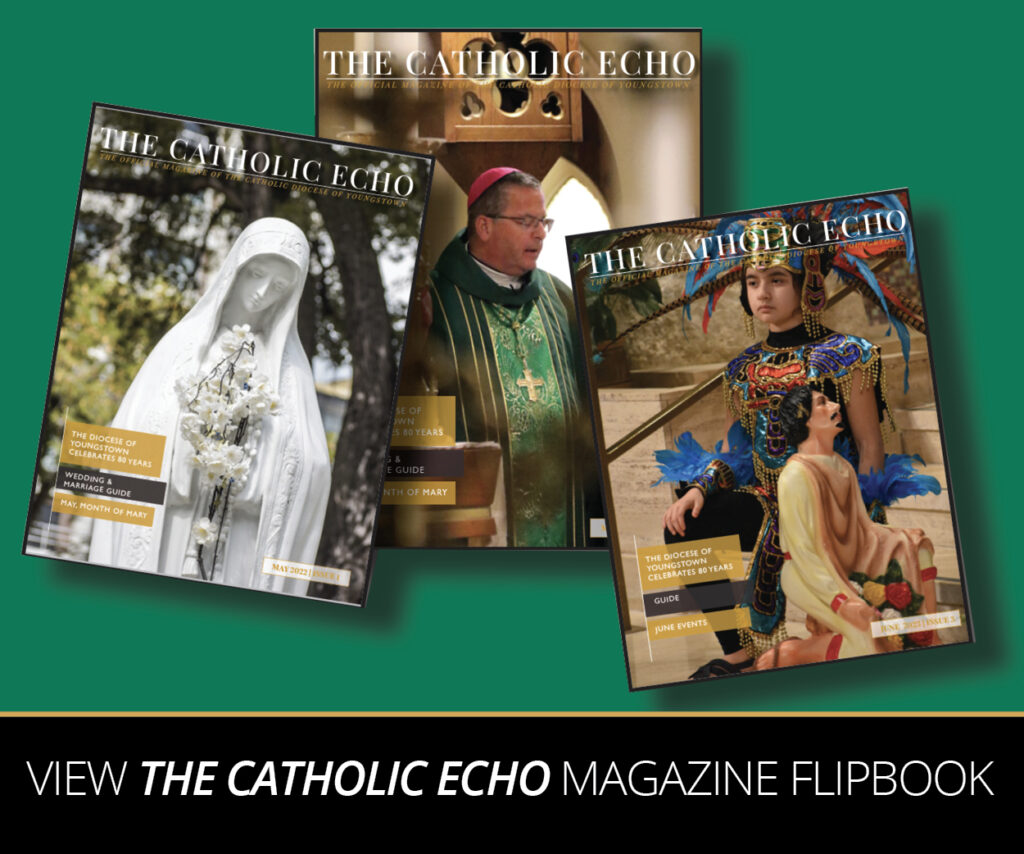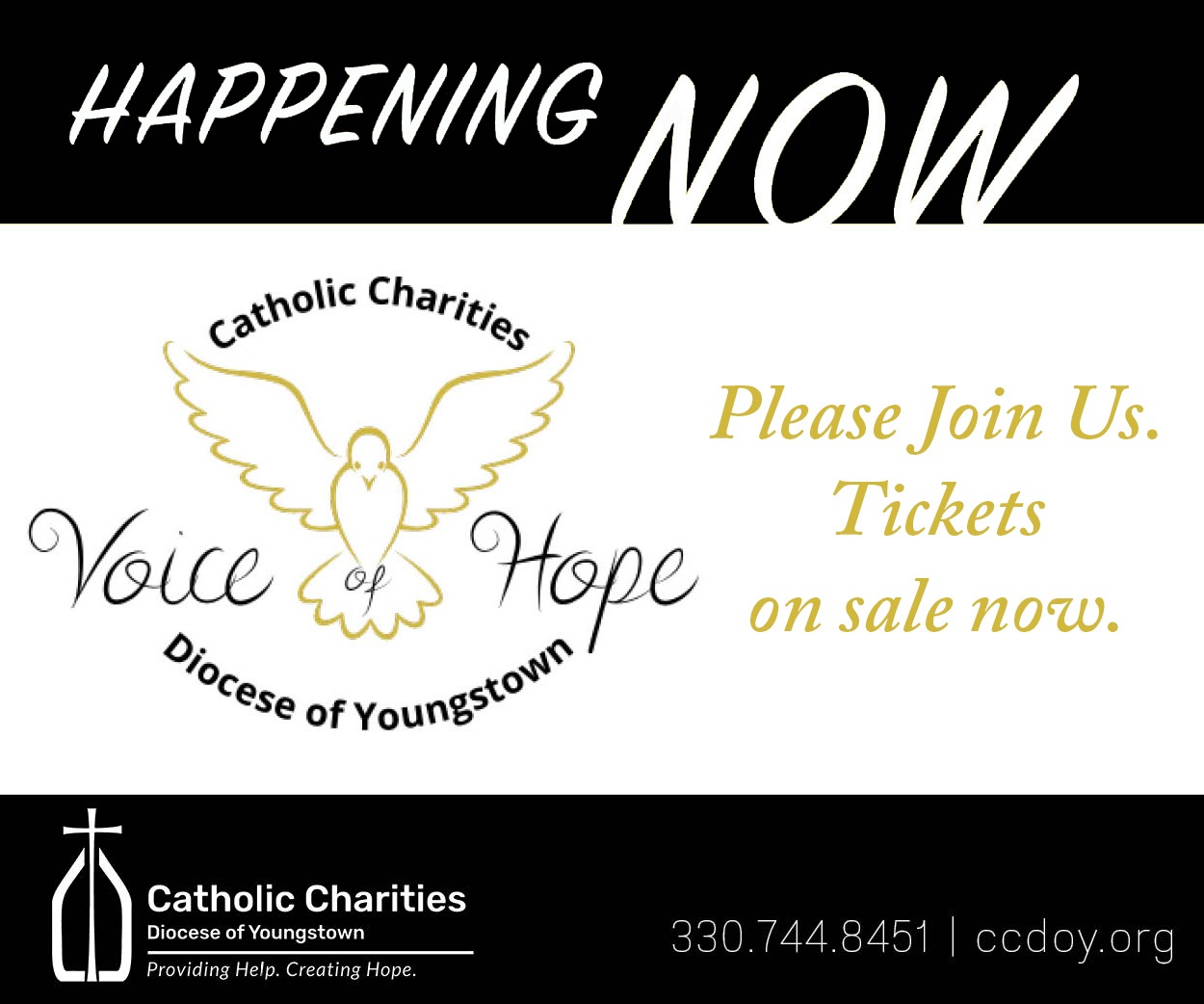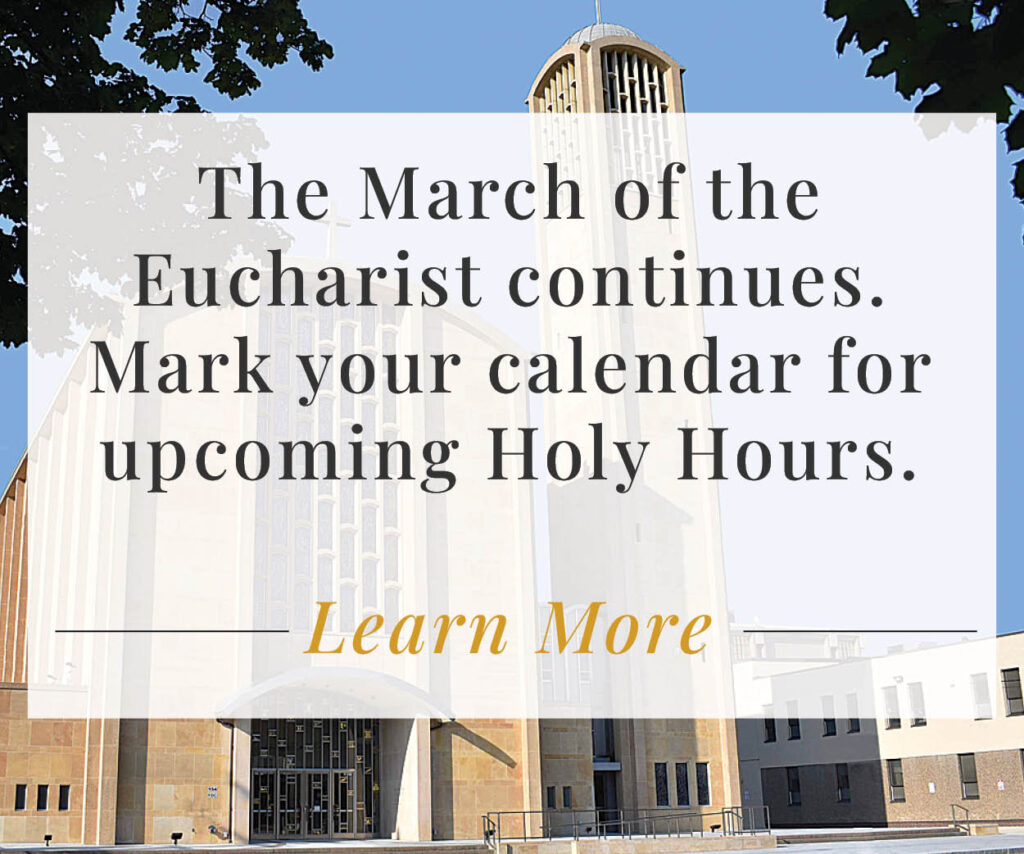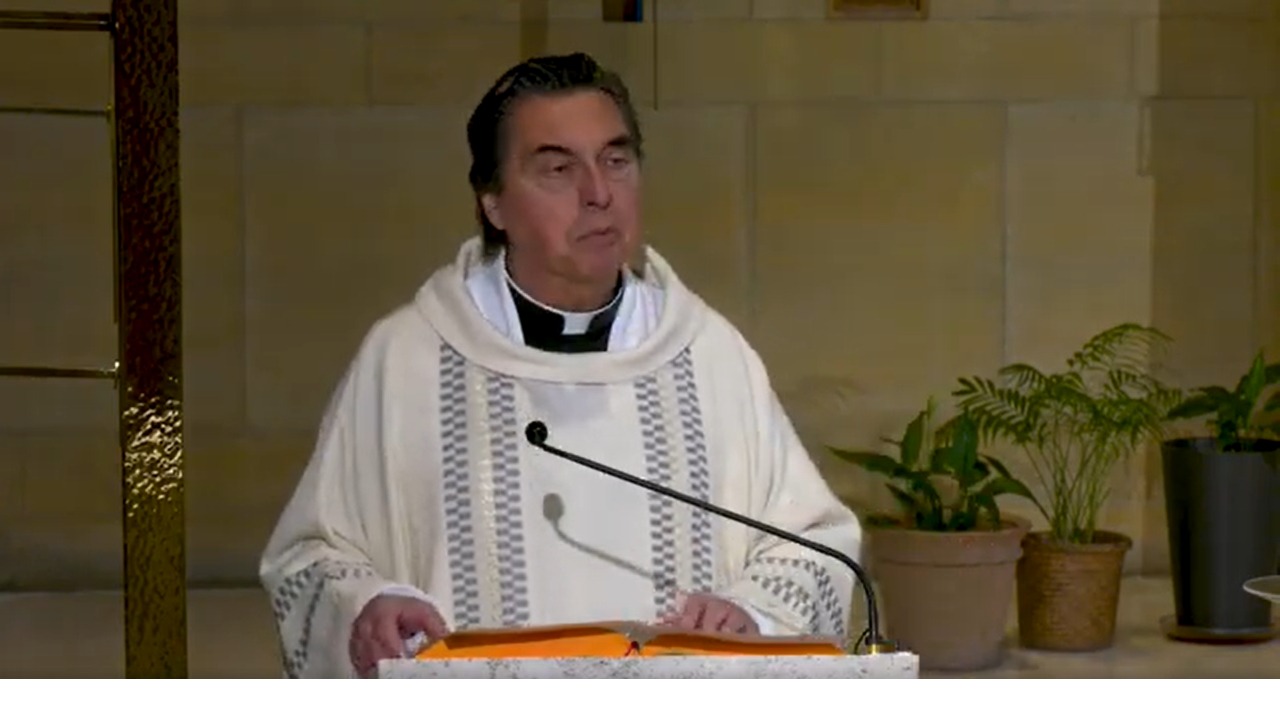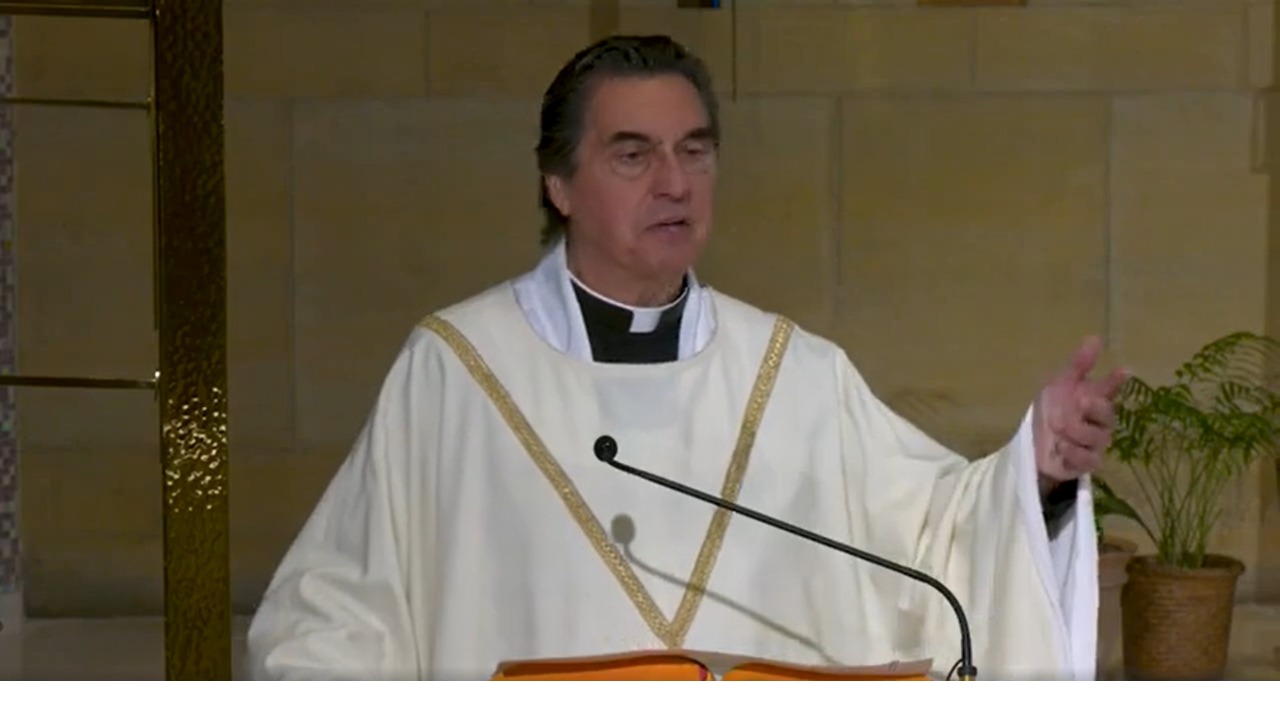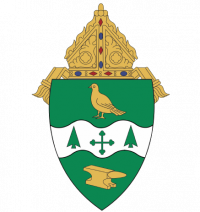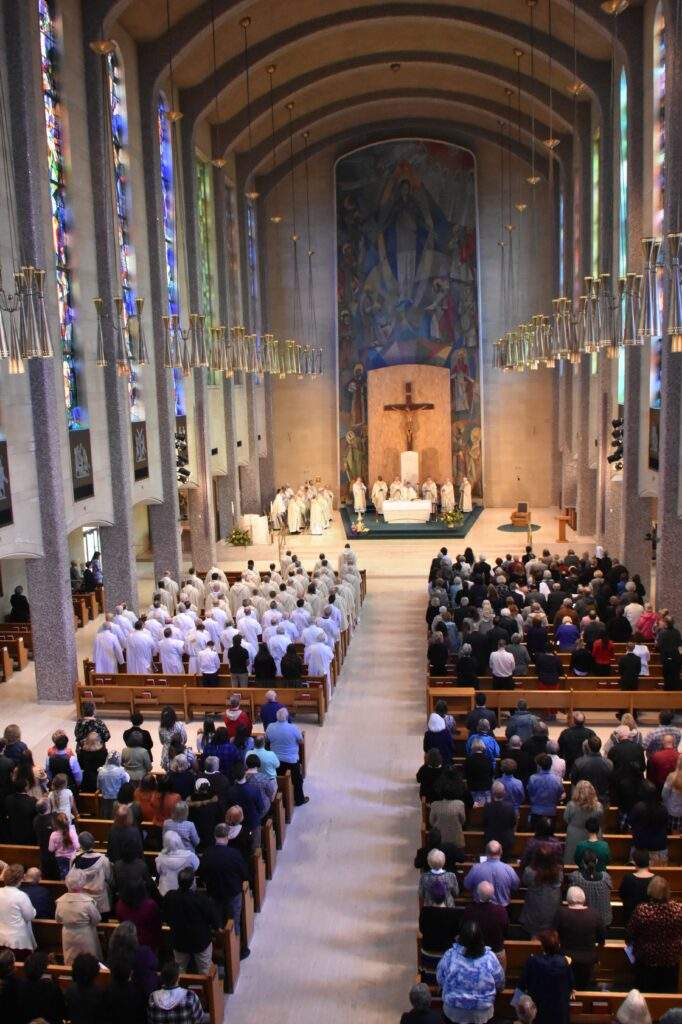
In the coming weeks, our world will begin to wake from its winter slumber. Spring will arrive and new life will abound with brighter days, green grass, budding trees and spring flowers. In our life of faith, Holy Week and Easter are on the horizon, and our liturgical celebrations point us toward a renewal of faith, hope and new beginnings. The slumber of winter and the soberness of Lent give way to the awakening of spring and the glory of the Resurrection! But what do the liturgical celebrations of Holy Week signify and mean to us? And more significantly: How can our participation in them renew our faith?
It is important to keep in mind that the actions and moments of Holy Week—from Palm Sunday to Easter Sunday—although rich in symbolism and imagery, are not solely reenactments of events in Jesus’ life; rather they are experiences of commemorating and embracing the suffering, death and resurrection of Christ in our own life, here and now. Our presence at these liturgies should strengthen our love for Christ and renew our faith. Let’s now “walk through Holy Week” to gain an understanding of what our celebrations are truly about.
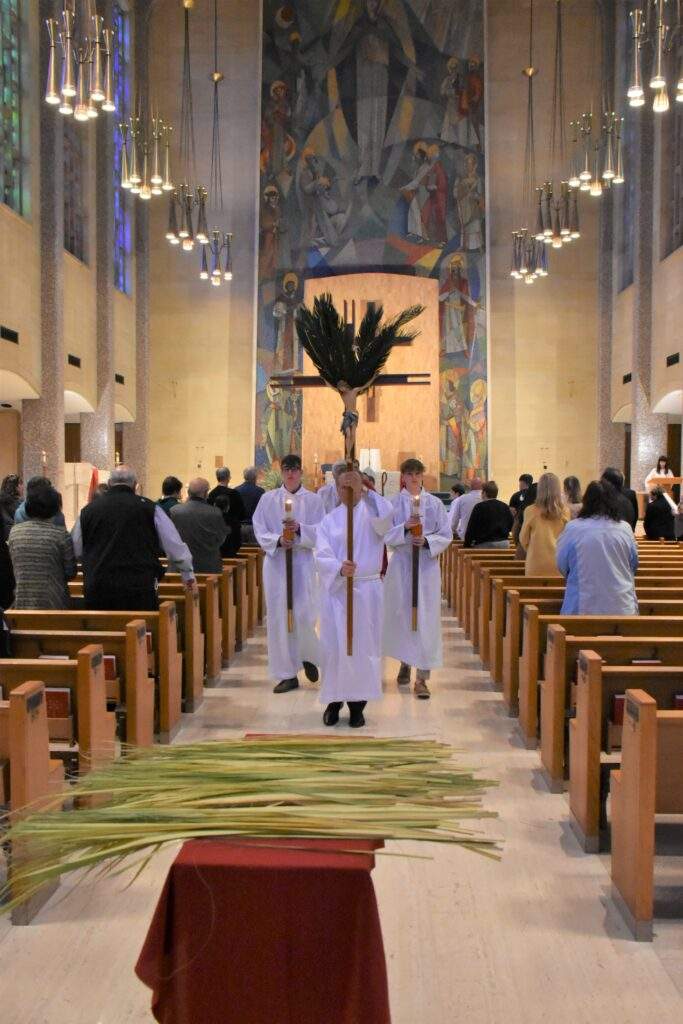
Palm Sunday
“Hosanna! Blessed is He who comes in the name of the Lord! Hosanna in the highest!” This verse from the Gospel of Mark, read as palms are blessed, opens our celebration of Holy Week. It begins with a procession. Practically speaking, processions serve in moving people from one place to another. However, the procession of Palm Sunday should make us aware of our journey toward eternal life. Just as Jesus entered Jerusalem in procession with people waving palm branches, we too receive palm branches this day and process into Holy Week mindful of our journey to Easter Sunday. Palm Sunday Mass includes the proclamation of the Passion from either Matthew, Mark or Luke (this year we read Mark’s version). The reading of the Passion sets the tone for the liturgy later this week. The mood of Palm Sunday is solemn, yet hopeful. It moves us from a scene of triumph to one of suffering and death, and the liturgy of Palm Sunday prepares us for the most solemn week of the year—the final days of Lent and the great days of the Sacred Paschal Triduum and Easter Sunday.

The Chrism Mass
The Chrism Mass is a diocesan celebration of unity and service. Observed on Holy Thursday morning or an earlier day near Easter (in our diocese the Chrism Mass is celebrated on Holy Tuesday morning), the Chrism Mass includes the Rite of Blessing of the Oil of the Sick, Oil of Catechumens and consecrating of the Sacred Chrism, along with the renewal of priestly vows by the clergy. The Chrism Mass celebrates our oneness in Christ through Baptism and our unity as a diocesan Church. The unity of the presbyterate with the Bishop is manifested and renewed as the clergy recommit themselves to their priestly promises and faithfulness to their office. The Bishop then blesses the Oil of Catechumens to be used in Baptism and the Oil of the Sick to be used for anointing those who are ill or infirmed. The Bishop also consecrates the Sacred Chrism to be used in the sacraments of Confirmation and Holy Orders. The newly blessed oils are distributed to all parishes for use in the coming year.
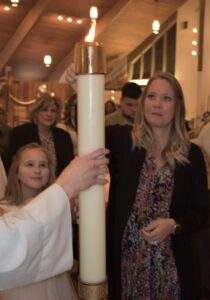
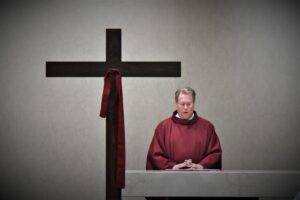

Left photo by Marilou McClimmans. Middle and right by Robert Zajack.
About the Sacred Paschal Triduum
The Sacred Paschal Triduum begins with the Mass of the Lord’s Supper on Holy Thursday. The Triduum, which means “three days,” is a celebration of liturgy that begins on Holy Thursday, continues on Good Friday and ends at the Easter Vigil on Holy Saturday. Thus, it is not three separate liturgical events, but one liturgy that takes three days to celebrate. This is made even more real upon realizing that the priest doesn’t proclaim, “Go forth, the Mass is ended, alleluia, alleluia!” until Saturday evening, thus ending what started on Thursday. It is also because of the prime significance of this three-day liturgy that the Church suspends other activities such as Baptisms, funerals, anointings and weddings during this time. The Sacred Paschal Triduum solemnly celebrates the greatest mysteries of our faith and redemption.
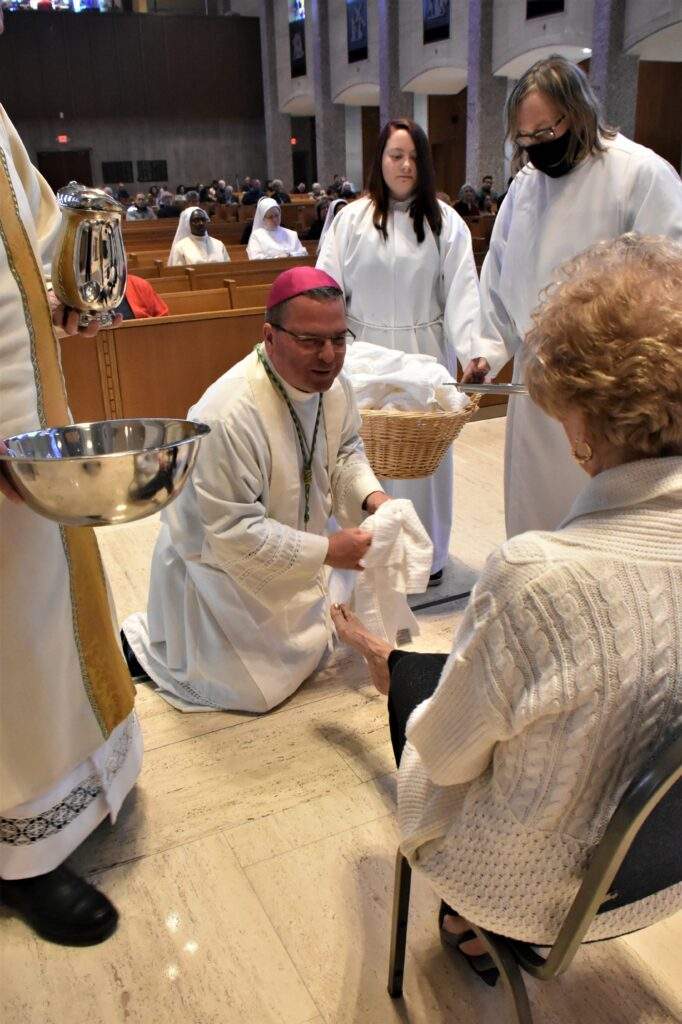
The Sacred Paschal Triduum: Holy Thursday
The Mass of the Lord’s Supper begins the three-day liturgy and includes three special moments: the reception of the oils blessed at the Chrism Mass; the washing of feet; and the transfer of the Blessed Sacrament and stripping of the sanctuary. This Mass commemorates Christ’s giving of himself to us—His Body and Blood in the form of bread and wine. It reminds us that we are part of the Body of Christ every time we receive His Body and Blood.
The reception of the Holy Oils blessed at the Chrism Mass is optional, but it brings an awareness of belonging to a wider diocesan Church, since the oils were blessed by the Bishop at the cathedral and sent to each parish in the diocese. The Scripture readings (the same each year) recall the prescriptions for preparing the Passover Meal (Exodus), the institution of the Eucharist (1 Corinthians) and the events of the Last Supper (John).
As Jesus ministered to all people, we are also called in the truest sense of community to give, receive and share our very lives with others. Feet are washed to remember and celebrate our call to serve one another as members of the Body of Christ. Thus, this action is not a reenactment of Jesus washing the feet of the disciples, but rather a recalling of the charge given to the disciples and every baptized person to be of service to one another as disciples. With this understanding, it makes sense that the washing of feet includes all dimensions of the community—young, old, male, female, single, married. As we have listened, we have been taught, and now we do.
After the Liturgy of the Eucharist and reception of Holy Communion, the liturgy moves to remembering the events that happened after the supper and throughout the evening and early morning. It is a time of struggle, capture and illegal trial. From the brightness of the supper, we enter the darkest of nights ever known. The Blessed Sacrament is removed from the tabernacle and reserved for vigil prayer. The Church is transformed from presence to absence, and all are invited to allow the pain of the world’s suffering to touch us. The sanctuary furnishings are symbolically removed; the church is darkened and silence pervades, allowing the liturgy to move to Good Friday.

The Sacred Paschal Triduum: Good Friday
Good Friday is a day of somber reflection and quiet prayer. While the demands of modern life make this a challenge, every effort should be made for some time of quiet solitude. It is a day of fasting from food and should be a day of fasting from normal activity and routine. The Good Friday liturgy (not Mass!) contains three distinctive parts: the proclamation of the Passion and Solemn Intercessions; the Adoration of the Holy Cross; and Holy Communion. The Passion of the Lord is read from the Gospel of John, recalling the suffering and death of Jesus Christ. The Solemn Intercessions are more pronounced and formal than those occurring on regular Sundays. They seek God’s intercession for the many troubles of the world and people. The Adoration of the Holy Cross, or veneration, allows all present to be reminded that—just as Christ suffered, we too have been asked to bear our crosses in life with strength and courage. The reception of Holy Communion solidifies our union with Christ in His suffering. All depart in silence with the anticipation of celebrating our redemption and resurrection the next day at the Easter Vigil.

The Sacred Paschal Triduum: Easter Vigil
The Easter Vigil begins the conclusion of the Sacred Paschal Triduum’s liturgy that started on Holy Thursday. It is the vigil of the year, bringing together all the symbols and rituals of our faith celebrated on Thursday and Friday to the culmination of what the resurrection of Jesus means for us today. It begins in darkness. Every effort should be made that it is dark outside when it begins. For this reason, the Easter Vigil is to start later than the regular Saturday anticipated Mass. There are four parts to the Easter Vigil: the Service of Light; the Liturgy of the Word; the Liturgy of Baptism; and the Liturgy of the Eucharist.
The Service of Light begins outside with the Blessing of the New Fire and Preparation of the Candle. The Easter candle, lighted from the new fire, is processed into the darkened church, symbolizing the new light that has come to the world. The Easter Exsultet repeatedly proclaims, “This is the night!” This is the night when the Light of Christ has come! The Liturgy of the Word recounts salvation history, of how God is our God and we are His people, and how this night has become “the night!” The Liturgy of Baptism welcomes those who have desired and longed to be members of Christ’s Body—the Church. Our catechumens are baptized and welcomed. Those already baptized who seek to join the Church are received into the faith. Both the newly baptized and received candidates confirm their faith by receiving the power of the Holy Spirit in the Sacrament of Confirmation.
Finally, the newly baptized and received candidates complete their initiation by joining the gathered community at the table and receive the Body and Blood of the Lord for the first time. The resurrection of the Lord is proclaimed, the celebration of Easter begins, and the joy of redemption and salvation continues. And, it is at this moment, that the priest (or deacon) boldly proclaims that what was started on Thursday has joyfully come to an end. For indeed, we “Go forth, for the Mass has ended, alleluia, alleluia!”

